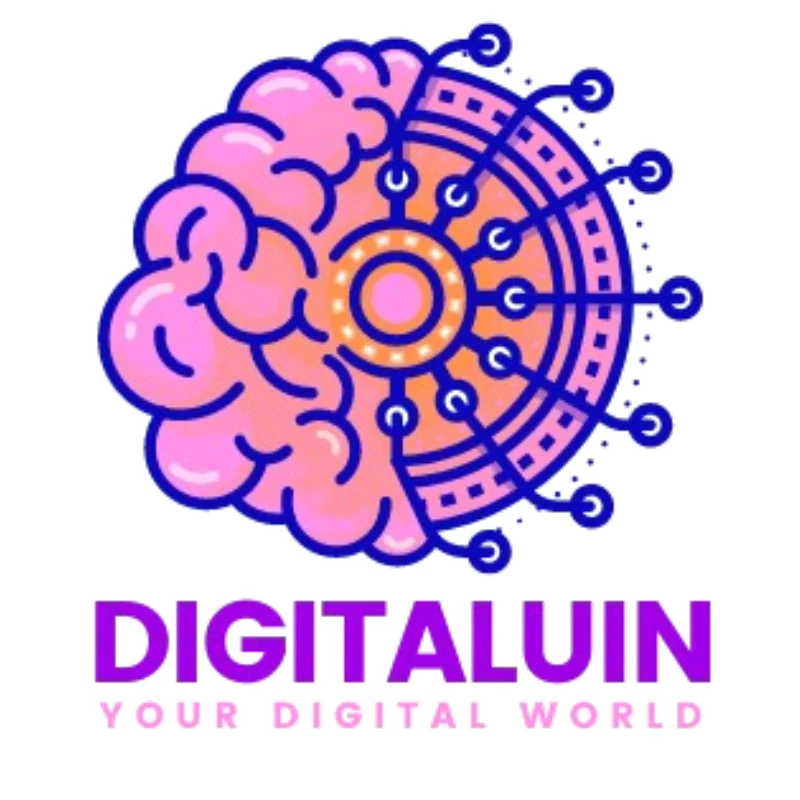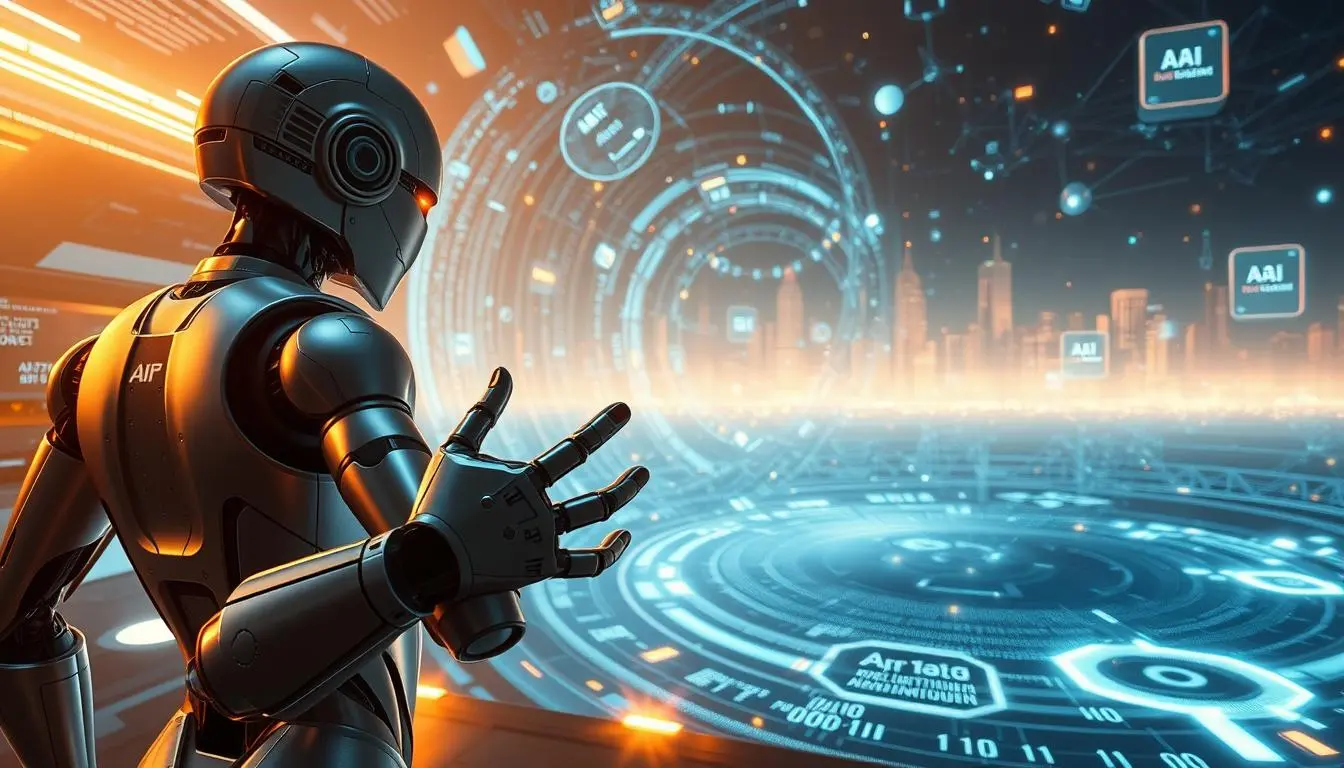What is Artificial Intelligence?
You’ve probably used AI before. Maybe it was Siri or Alexa, or those cool product suggestions online.
Artificial intelligence refers to computer systems that mimic human thought and behavior, allowing them to reason, solve problems, and even generate novel ideas.

As tech gets better, AI is playing a bigger role in our lives. It is transforming the fabric of our daily routines and professional environments.
Table of Contents
The Fundamentals of Artificial Intelligence
To truly appreciate AI, one must first understand its foundational elements. Artificial Intelligence is a vast interdisciplinary domain, integrating concepts from computer science, cognitive science, and more. These include computer science, data analytics, and statistics, as well as hardware and software engineering.
It also involves linguistics, neuroscience, and even philosophy and psychology.
Defining AI in Simple Terms
At its core, AI involves creating systems that can reason, learn, and act like humans. These intelligent technologies are built to execute functions that once required human intellect, such as interpreting visuals, understanding language, and making judgments.
The Core Goal of AI Technology
AI’s fundamental aim is to build machines capable of replicating the cognitive abilities of humans. This enhances productivity and efficiency. Within AI, machine learning and deep learning empower systems to evolve by analyzing data and refining their outputs over time.
Here’s a comparison of key AI concepts:
| Concept | Description | Application |
|---|---|---|
| Machine Learning | Enables systems to learn from data | Predictive analytics, recommendation systems |
| Deep Learning | A subset of machine learning that uses neural networks | Image recognition, natural language processing |
| Cognitive Computing | Simulates human thought processes | Expert systems, decision support systems |
The Historical Evolution of Artificial Intelligence
Did you know that the idea of ‘a machine that thinks’ has been around for thousands of years? It started in ancient Greece. The history of artificial intelligence is filled with pioneers who have shaped it into what we know today.
Early Concepts and Pioneers
AI’s origins can be traced to early visionaries who imagined creating thinking machines that could mirror human reasoning. Alan Turing was a key figure in this journey. In 1950, he published a paper called “Computing Machinery and Intelligence.”
This paper helped set the stage for understanding if machines could think like humans. Another important moment was in 1956. The term “artificial intelligence” was first introduced by John McCarthy during the Dartmouth Conference, where the foundational Logic Theorist program also debuted.
Key Milestones in AI Development
AI has made huge strides over the years. The creation of neural networks has been a big leap. It empowers machines to independently evolve their understanding by uncovering patterns hidden within data.
From automating workflows to uncovering insights in big data, AI is reshaping how industries function and how we experience everyday life.
Types of Artificial Intelligence Systems
Artificial Intelligence encompasses a spectrum of technologies that simulate various aspects of human thinking. Each has its own strengths and weaknesses. They are grouped based on what they can do and how well they do it.
Narrow vs. General AI
Narrow AI specializes in performing singular tasks exceptionally well, like facial detection or language translation. Narrow AI is what we see in many places today, from smart speakers to self-driving cars. General AI, still hypothetical, would possess the versatility and reasoning skills to tackle multiple tasks like a human brain.
Reactive Machines and Limited Memory AI
Reactive machines respond to immediate stimuli without storing any historical information. Deep Blue, the chess computer, is an example. AI with limited memory can recall past interactions briefly, enabling more sophisticated actions, such as maneuvering autonomous vehicles.
Theory of Mind and Self-Aware AI
Theory of Mind AI aspires to develop machines capable of comprehending the mental and emotional states that influence human behavior. This is an area of ongoing research. Self-Aware AI is even more advanced. It would know it exists, a concept that’s just starting to be explored.
Knowing about these types helps us see where AI is now and where it might go. From the AI we use every day to the more advanced kinds being worked on.

How to Understand Machine Learning in AI
To deeply understand AI, it’s essential to study machine learning, which involves using data-driven algorithms to make predictions or decisions. This way, AI gets better with time, becoming more precise and trustworthy.
Identifying Supervised Learning Applications
Supervised learning involves training models on pre-labeled data sets, commonly used in applications like voice recognition and image classification.
Recognizing Unsupervised and Reinforcement Learning
Unsupervised learning finds patterns in data without labels. Reinforcement learning relies on a trial-and-error approach, where agents learn optimal behavior through feedback from their environment. Unsupervised learning is great for grouping data, while reinforcement learning is used in robotics and games.
Assessing How Data Shapes AI Training Processes.
AI performance hinges significantly on both the volume and quality of input data, making proper data preparation essential. It’s important to have diverse, accurate, and relevant data for strong AI systems.
Understanding different machine learning models and the role of data clarifies how AI systems are trained and where they can be applied.
A Hands-On Introduction to Deep Learning and Neural Network Architectures.
In studying AI, you’ll encounter deep learning, a technique where layered neural networks process intricate data patterns. These networks mimic the brain and are great for tasks like recognizing images and understanding language.
How Artificial Neural Networks Function
Artificial neural networks have layers of nodes or “neurons.” Each layer works on the information, helping the network learn and decide. This layered setup enables deep learning models to identify intricate patterns in data.
Key aspects of neural networks include:
- Input Layer: Receives the initial data
- Hidden Layers: Perform complex calculations
- Output Layer: Provides the final result
Distinguishing Between CNN and RNN Models
The two foundational types of neural networks are CNNs, tailored for visual data, and RNNs, designed for sequences. analyze visual data through hierarchical layers, progressively detecting patterns from edges to complex shapes. Recurrent neural networks excel at managing information that unfolds over time, such as language or time-series data.
When choosing between CNNs and RNNs, consider the nature of your data:
- Use CNNs for spatial data like images
- When dealing with sequences like text or event timelines, RNNs are a strong modeling choice.
How to Identify Natural Language Processing in Everyday Use
Natural Language Processing is transforming how humans and computers converse, enabling smoother and more natural dialogue. From voice assistants to spam filters, natural language processing works silently behind the scenes in countless daily interactions.
NLP mixes computer science, AI, and linguistics. It lets computers understand and make natural language. This tech is key for talking to computers.
Identifying Text Analysis Capabilities
NLP can do cool things like sentiment analysis, entity recognition, and topic modeling. These skills are in many tools, like:
- Sentiment analysis tools to see what people think on social media
- Entity recognition to spot important people and groups in the news
| NLP Application | Description |
|---|---|
| Sentiment Analysis | Figures out the feeling behind text |
| Language Translation | Makes text in one language into another |
| Text Summarization | Makes long texts short and meaningful |
Leveraging Language Generation Tools
Language generation is a big deal in NLP. It lets machines write like humans. For example, chatbots use NLP to talk to customers.

Computer Vision: Identifying AI Visual Systems
Now, you can talk to devices that can see and understand pictures. This is thanks to computer vision. It lets computers see and understand pictures, just like we do. It’s used for things like recognizing faces, finding objects, and sorting pictures.
How Image Recognition Works
Recognizing images and interpreting visual inputs is a cornerstone of computer vision technology. It trains AI to spot and sort pictures. This is done with deep learning, where neural networks learn from lots of pictures. They pick up on patterns, so they can tell pictures apart.
Understanding Object Detection Technology
Object detection goes beyond just recognizing pictures. It finds and spots objects in them too. This is key for things like self-driving cars, watching over places, and robots. It can find many objects in one picture and tell us where they are and what they are.
| Technology | Description | Applications |
|---|---|---|
| Image Recognition | Identifies and classifies images | Facial recognition, image classification |
| Object Detection | Identifies and locates objects within images | Autonomous vehicles, surveillance, robotics |
How to Spot Artificial Intelligence in Your Daily Life
As you go about your day, you might not notice the artificial intelligence around you. It’s everywhere, making many devices and services better. This technology is a big part of our lives now.
AI Features in Your Smartphone
Your smartphone is full of AI features. Voice assistants, such as Google Assistant and Siri, rely on NLP to understand and respond to your queries. They also help with predictive text and personalized suggestions.
Interacting with Smart Home AI Systems
Smart home devices, like Amazon Echo, use AI to learn what you like. They can change the lights, temperature, and security based on your habits. This all becomes possible through the power of your spoken instructions.
Transportation and Navigation AI Tools
AI is changing how we travel and navigate. Applications like Google Maps use real-time data to inform you about traffic conditions. Self-driving cars also use AI to make decisions on the road.
| AI Application | Description | Examples |
|---|---|---|
| Smartphone AI | Enhances device functionality | Siri, Google Assistant |
| Smart Home AI | Automates home control | Amazon Echo, Google Home |
| Navigation AI | Optimizes routes and traffic | Google Maps, Waze |
By noticing these AI technologies, you can see how cognitive computing and automation change our lives. From smart homes to predictive tools, AI is seamlessly integrating into our lives to boost convenience and efficiency.

Identifying AI Applications Across Industries
Exploring artificial intelligence, you’ll find it used in many fields. It boosts efficiency, drives innovation, and helps make better decisions.
Healthcare Diagnostic Tools
In healthcare, AI is changing diagnostic tools for the better. It makes diagnoses faster and more accurate. AI looks at medical images like X-rays and MRIs to spot issues humans might miss.
Financial Services AI Implementation
The financial world uses AI for fraud detection, risk analysis, and managing portfolios. AI algorithms comb through extensive datasets to detect trends, anomalies, and actionable insights. This helps stop financial crimes.
Manufacturing and Supply Chain AI Solutions
In manufacturing, AI helps with supply chain management and predictive maintenance. Predictive AI can anticipate machinery failures, reducing downtime and enhancing operational efficiency.
| Industry | AI Application | Benefits |
|---|---|---|
| Healthcare | Diagnostic Tools | Faster and more accurate diagnoses |
| Financial Services | Fraud Detection and Risk Analysis | Improved security and reduced risk |
| Manufacturing | Predictive Maintenance and Supply Chain Optimization | Increased productivity and reduced downtime |
How to Evaluate Ethical Considerations in AI
Developing AI responsibly requires balancing innovation with fairness to ensure technology benefits society as a whole. When dealing with AI, it’s key to think about its ethical sides. This includes how it’s made and used.
Assessing Privacy and Data Security Concerns
It’s important to see how AI deals with personal data. Make sure it follows strict data protection rules. Data security is critical, and any mistakes can be very harmful. Look into what AI makers do to protect user info.
Identifying Bias in AI Systems
Bias in AI can cause unfair results and discrimination. You must find and address biases in AI’s algorithms and data. This means understanding how AI is trained and making sure it’s fair and equal.
Understanding Automation’s Impact on Employment
The effect of AI on jobs is a big ethical issue. Think about how AI might change the job market and what to do about it. This includes supporting education and training for new jobs.
Getting Started with AI: Practical Steps
Starting your AI journey means exploring many learning paths and communities. It’s key to know the practical steps to take.
Beginner-Friendly AI Platforms
Begin by checking out platforms with easy-to-use interfaces for machine learning and deep learning. Google’s TensorFlow, Microsoft Azure Machine Learning, and Amazon SageMaker are great places to start. They offer tools and resources to help you create and use AI models.
Learning Paths for AI Enthusiasts
Following a structured learning path is helpful. Online courses on Coursera, edX, and Udemy cover a wide range of AI topics. They go from basic to advanced levels.
Open-Source AI Communities
Joining open-source AI communities is a great way to learn and work together. Places like GitHub and Kaggle let you connect with other developers. You can share knowledge and work on projects together.
| Platform | Focus | Level |
|---|---|---|
| TensorFlow | Deep Learning | Beginner/Advanced |
| Coursera | AI Courses | Beginner/Advanced |
| Kaggle | Machine Learning Competitions | Intermediate/Advanced |
Conclusion: The Future of Artificial Intelligence
From healthcare to entertainment, Artificial Intelligence is reshaping diverse aspects of human experience. It makes smartphones better and helps in healthcare. AI’s effect is huge.
The future of AI looks bright. It will get better in areas like general AI and ethics. You’ll see AI in your daily life more, like in smart homes and travel.
But we need to work on AI’s challenges. We must protect privacy and data, avoid AI bias, and think about jobs. This way, AI can help us without causing harm.
The future of AI is thrilling. Keeping up with AI news is important. AI will shape our world in big ways.







